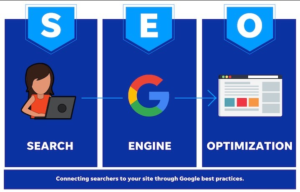As a pest control business owner, you know that effective marketing is key to your success. Unlike door-to-door sales, which can be expensive and exhausting, online marketing offers a more targeted approach.
Some of the best pest control marketing ideas include using Google Business Profile, attending local events and networking, and encouraging delighted customers to leave reviews. These strategies can help you grow your business. Contact Pest Control Leads now!

Pay-per-click (PPC) advertising is a way to generate leads for your Pest Control Leads business. It uses targeted ads to appear in search engine results when potential customers search for specific keywords related to your business. When clicked, these ads direct customers to your website or phone number. While PPC can be expensive, it can also be very effective at generating high-quality leads.
Digital marketing strategies and tools are becoming increasingly popular among Pest Control companies looking to generate leads. These strategies are often cheaper, offer a higher ROI, and provide more precise targeting than traditional marketing methods. Some of the most effective digital marketing tools include SEO, PPC, social media marketing, and email marketing. Using these tools to generate Pest Control leads can help your company increase sales and grow your business.
While it is possible to use PPC advertising alone, working with a professional is often more effective. A professional can ensure that you’re getting the best return on investment and are spending your money wisely. They can also save you time by managing all aspects of your campaign.
Using a professional will help you stay ahead of the competition and keep your online marketing efforts up to date. A good digital agency will have a deep understanding of your business and can recommend new tactics that will generate better leads. They will also know how to set up and run a paid search campaign that will target your ideal customer.
A digital marketing agency will also help you measure the lifetime value of a customer to understand which channels and keywords are generating the most revenue for your Pest Control business. This information will allow you to optimize your marketing campaigns and boost ROI.
Another important aspect of digital marketing is utilizing customer feedback and reviews to promote your Pest Control services. Customers are more likely to call a service provider with positive reviews as they feel confident that they will receive high-quality services. In addition, these reviews can also help you attract more clients and drive organic traffic to your website.
SEO
Using search engine optimization (SEO) to generate leads for pest control businesses is one of the most cost-effective methods of attracting new customers. This method uses a variety of tools and strategies to promote a business online and improve its visibility in search results. This includes creating a website that features contact information and hours, describes services, and displays customer reviews. It also requires a thorough understanding of Google search algorithms and how to place the right keywords in relevant content. If this is beyond your skillset, you can hire an expert to help with strategy and implementation for a fee that is tied to successful results.
Another way to generate leads for pest control is through social media marketing. Creating engaging content and posting it on your social media platforms can attract visitors and increase your business’s visibility. You can also use paid advertising to target specific audiences and boost your presence in local searches.
Once you have a steady stream of leads, it is important to nurture them with targeted content and offers. This will help keep your audience engaged and increase the likelihood of converting them into paying customers. A personalized approach to follow-up communications is especially effective, as it shows that you care about each lead and will be attentive to their needs.
You can also use analytics tools to track your leads’ conversion rates and quality, and identify any areas for improvement. This will allow you to lean towards the strategies that are most effective and eliminate those that do not work as well. For example, you may want to focus on optimizing your website’s content or attend more in-person community events.
Aside from SEO, pest control businesses can also use paid advertisements to generate more leads. These advertisements appear in relevant searches and can attract potential clients at a moment when they are most likely to take action. Using targeted keywords will improve your chances of reaching the audience you want and will ensure that your ads are displayed to people who are most interested in your services.
Social media marketing
Identifying your ideal customer profile can help you target the right audience for your pest control business. This will ensure that your lead generation efforts are generating high-quality leads that are likely to convert into happy new customers. You can also use customer data to segment your marketing campaigns and measure the effectiveness of each one. This will help you determine which ones are delivering the best results and allocate your resources more effectively.
Social media platforms can be an effective way to generate leads for your pest control company. Share engaging content that engages your audience and encourages them to take action. These platforms were designed for sharing, so when your audience sees something they like, they will share it with their friends and family members. Post content that is relevant to your industry and geographical area, and use keywords in your posts to increase visibility.
Another effective way to generate leads is by building an email list and delivering targeted content to potential customers. This can be done through a variety of channels, including Facebook, Instagram, TikTok, and LinkedIn. Email marketing offers one of the highest ROIs among digital marketing channels, and it can be used to nurture leads and drive them toward conversion.
Referral programs can be a great way to generate leads for your pest control company. Research shows that nearly 8 out of 10 consumers trust recommendations from friends and family. Moreover, referrals from existing customers can reduce your customer acquisition costs. Incentives such as free services and discounts can encourage your customers to refer their friends and family.
Local SEO is another important way to generate leads for your pest control business. It helps you rank higher in organic search results and attracts customers in your geographic area. It is also a cost-effective strategy to implement, and it can bring in qualified leads that are more likely to buy.
Once you’ve generated a list of leads, you need to convert them into clients. The key is to create a consistent follow-up process and use tools that are designed specifically for the pest control industry. A CRM program can help you automate this process, and it can track all of your leads from a single dashboard.
Email marketing
Email marketing is a powerful way to capture leads for pest control services. It can also be used to nurture those leads towards conversion. To ensure that your email campaigns are effective, you should use a professional and engaging style of writing. You should also include informative content that is relevant to your audience. For example, you can share customer reviews and testimonials that will help your audience trust you and increase their likelihood of booking a service.
Another strategy that is often overlooked is to network with business associates and customers. Referral programs are an effective way to generate high-quality leads, and they can be especially helpful for pest control companies. According to SalesRabbit, 8 out of 10 consumers are more likely to buy a new product if it has been recommended by their friends and family. By incentivizing existing customers, partners, and business associates to refer new clients to your company, you can build a steady stream of new customers.
Your website is another key element of your lead generation strategy. It should be optimized for search engines and feature clear contact information, a list of services, and pricing information. A well-designed, user-friendly website will attract more visitors and provide a good first impression of your pest control company. You can also use social media platforms to generate leads, but make sure to choose those that are most appropriate for your target audience.
It is important to measure the effectiveness of your lead generation campaign, and you can do this by tracking key performance indicators (KPIs). These metrics will help you determine which marketing strategies are working and which ones need improvement. In addition, you should collect feedback from your customers and leads and analyze data to optimize your campaign results.
To maximize your lead generation efforts, consider using a CRM software that is designed specifically for the pest control industry. This will eliminate the need to manually enter each new lead into a system, and it will give you a clear picture of your campaign performance. A CRM will also allow you to automate follow-up emails and track your ROI.

